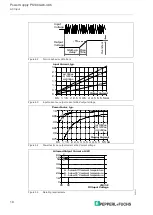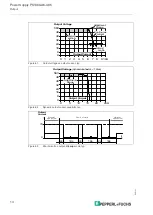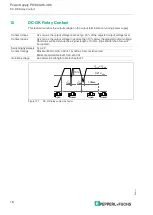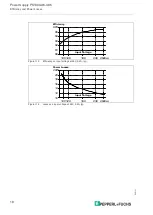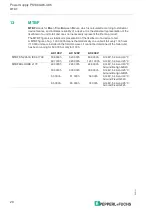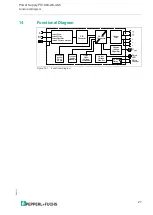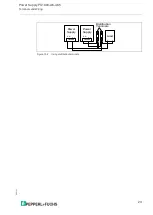
Power Supply PS1000-A6-48.5
Output
20
21
-1
1
13
8
Output
Output voltage
Nom. 48V
Adjustment range
Min.
48-56V
Guaranteed value
Max. 58.0V
This is the maximum output voltage which can occur
at the clockwise end position of the potentiometer
due to tolerances. It is not a guaranteed value which
can be achieved.
Factory settings
Typ.
48.0V
±0.2%, at full load and cold unit
Line regulation
Max. 10mV
Between 85 and 300Vac
Load regulation
Max. 50mV
Between 0 and 12A, static value, see Figure 8.1
Ripple and noise voltage Max. 50mVpp
Bandwidth 20Hz to 20MHz, 50Ohm
Output current
Nom. 6.0A
1
At 48V and an ambient temperature below 45°C,
see Figure 18.1
Nom. 5.4A
At 48V and 60°C ambient temperature,
see Figure 8.1
Nom. 4.0A
At 48V and 70°C ambient temperature,
see Figure 18.1
Nom. 5.2A
1
At 56V and an ambient temperature below 45°C,
see Figure 18.1
Nom. 4.6A
At 56V and 60°C ambient temperature,
see Figure 8.1
Nom. 3.4A
At 56V and 70°C ambient temperature,
see Figure 18.1
Typ.
15A
For minimal 12ms once every five seconds,
see Figure 8.2.
The output voltage stays above 40V.
See chapter 26.1 for more peak current
measurements. For AC 100V mains, the pulse length
is shorter than 12ms.
Overload behavior
Continuous current Output voltage above 26Vdc, see Figure 8.1
Hiccup
mode
2
Output voltage below 26Vdc, see Figure 8.1
Short-circuit current
Min.
6.3A
3
Load impedance <90mOhm, see Figure 8.3
Max. 7.7A
3
Load impedance <90mOhm, see Figure 8.3
Max. 2.2A
Average (R.M.S.) current, load impedance 50mOhm,
see Figure 8.3
Min.
14.5A
Up to 12ms, load impedance <90mOhm,
see Figure 8.2
Typ.
16.0A
Up to 12ms, load impedance <90mOhm,
see Figure 8.2
Output capacitance
Typ.
960µF
Included inside the power supply
1
Power boost
This power/ current is continuously allowed up to an ambient temperature of 45°C.
Above 45°C, do not use this power/ current longer than a duty cycle of 10% and/ or not longer than 1 minute every 10 minutes.
2
Hiccup mode
At heavy overloads (when output voltage falls below 26V), the power supply delivers continuous output current for 2s.
After this, the output is switched off for approx. 18s before a new start attempt is automatically performed.
This cycle is repeated as long as the overload exists. If the overload has been cleared, the device will operate normally.
See Figure 8.3
3
Discharge current of output capacitors is not included.










